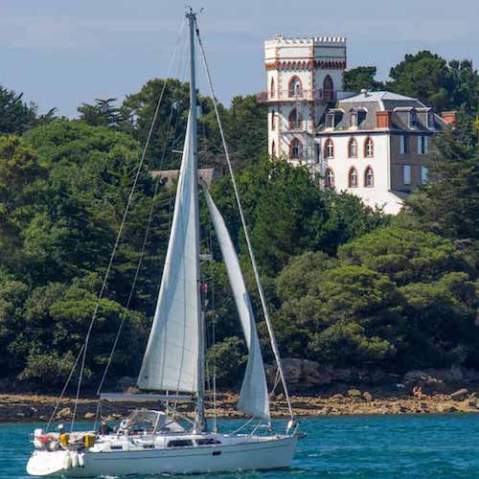When in doubt, bracket
You’ve found your scene, you’ve set the composition, now you have to nail the exposure to bring your landscape to life. The contrast in your scene can sometimes make it tricky to capture the highlights and the shadow detail. Or sometimes the changing light can give you problems. One of the best ways to ensure that you capture all of the details within the visible tonal range of the scene is exposure bracketing.

Best of three?
Usually, exposure bracketing works by shooting three versions of the same image at different exposures: one base exposure, a second over-exposed shot, and a third under-exposed version. You then either choose the best, or merge them together to create a composite.
Best with a tripod
Bracketing can be done while handholding the camera, but generally it is best to work with the camera on a sturdy tripod. This is especially true when shooting a sequence of images that may be composited using HDR techniques as it will avoid any alignment issues in post-processing.
Automatic exposure bracketing
Your camera’s automatic exposure bracketing (AEB) option really streamlines the process. When using auto bracketing, change the shooting release mode to Continuous, set the bracket options (exposure increments and number of shots), and then press and hold the shutter release to shoot the full set of bracketed images at once.
Most DSLRs have the option to shoot a sequence of three frames at up to ±2 full stops, which is usually adjustable in 1/3-stop increments. This gives a potential 4-stop exposure range, which will usually be sufficient to cover the dynamic range of most outdoor lighting situations.
More than three shots?
Some pro-level cameras will bracket up to nine frames a full stop apart each to create a bracketed spread of eight full stops. If you don’t have time to fully assess a scene for its exposure, you can use this sequence to record all the tonal information you might need. It’s better to have more than enough and delete what isn’t needed afterward, rather than return home and discover you missed the shot.

Recommended bracketing
You might want to start by bracketing by at least one full stop, but it really depends on the dynamic range of the scene being photographed. The only way to know for sure you’ve captured everything you need is to check the histogram on each image to be sure the highlights have been captured in one and the shadows in another. It is worth noting that the bracketing feature starts with whatever exposure setting is currently being used, so it’s possible to set exposure compensation and use that as the base exposure for your bracketed sequence.
Then it’s a case of choosing the best, or merging. But you should have your shot!
101 Top Tips for Landscape Photography is where professional landscape guru Carl Heilman II gives the benefit of a lifetime spent shooting spectacular wilderness and mountain shots, offering a host of targeted tips and tricks that will allow photographers of all abilities to lift their landscape work to the next level. The reader will learn how to harness natural drama, use difficult lighting situations to your advantage and capture unusual perspectives, all the while benefiting from Carl’s clear instruction and beautiful landscape work.
[one_whole boxed=”true”]
 101 Top Tips for Landscape Photography, Carl Heilman II
101 Top Tips for Landscape Photography, Carl Heilman II
£7.99 Download the PDF now!
This PDF version retains the styling of the original print book.
RRP for print edition: £14.99
[button color=”Accent-Color” size=”small” url=”https://www.ilexinstant.com/product/101-top-tips-for-digital-landscape-photography/” text=”Digital Edition”] [button color=”Accent-Color” size=”small” url=”http://www.amazon.co.uk/dp/1781579962?tag=ilexpresscom-21&camp=1406&creative=6394&linkCode=as1&creativeASIN=1781579962&adid=08YEA5ARS21G297EPN7K&&ref-refURL=http%3A%2F%2Fwww.ilexinstant.com%2Fproduct%2F101-top-tips-for-digital-landscape-photography%2F” text=”Amazon UK (Print)”]
[button color=”Accent-Color” size=”small” url=”http://www.amazon.com/101-Tips-Digital-Landscape-Photography/dp/1781579962/ref=sr_1_2?ie=UTF8&qid=1399878397&sr=8-2&keywords=carl+heilman” text=”Amazon USA (Print)”]
[/one_whole]



